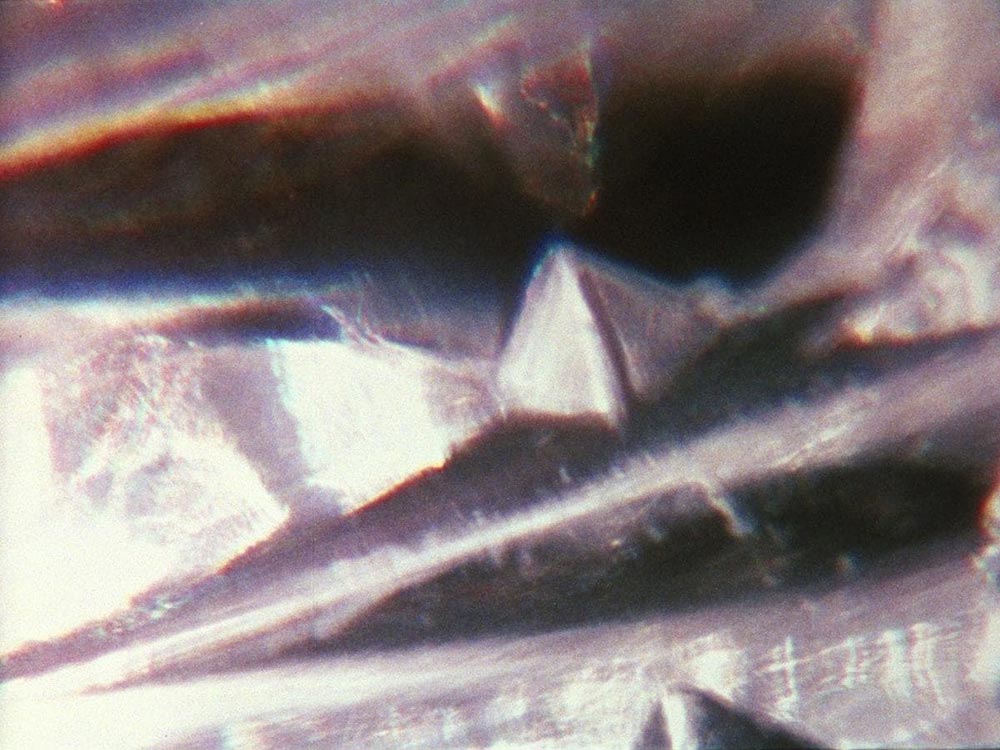Stan Brakhage found revelations in the unpredictability of the film apparatus throughout his career. The Text of Light (1974) began as an attempt to make a portrait of a businessman named Gordon Rosenblum, but an accidental discovery turned it into a cinematic answer to lyrical abstract painting. While Brakhage was calibrating his tripod in Rosenblum’s office, the weight of his lens caused its bellows to sag. As a result, its aim landed on a fine crystal ashtray atop Rosenblum’s desk, which was surrounded on all sides by windows. Before adjusting the setup, Brakhage stopped to look through the camera. In a 1997 interview with Scott MacDonald, collected in Stan Brakhage: Interviews, Brakhage remembered shouting: “Oh my god! What I'm seeing is incredible.” A “forest of glassine trees” appeared to have cropped up in his viewfinder.
Brakhage realized that light was volleying through the windows and bouncing off Rosenblum’s ashtray, then dispersing into shards of bright colors. He placed other crystal objects and knickknacks on the desk. As the sun moved across the sky, bouncing between his labyrinth of light, Brakhage took individual frames on his camera while gently tapping the side of the lens, causing the colors to undulate and shine. All the colors of the visible spectrum come from the sun, and they become highly saturated when they are refracted. This gives the palette of light streaks in The Text of Light an astonishing intensity. Brakhage cited the Romantic painter J.M.W. Turner and the Abstract Expressionist Clyfford Still as influences on the film. In the interplay of light and color, these two artists saw both spiritual immanence and a transcendent capacity to evoke emotion beyond the physical appearance of lines, shapes, or compositions.
In Rosenblum’s office, as the sun moved across the sky, it changed the patterns and colors Brakhage could capture with his camera. A crest of bright orange looked like the rim of a mountain and a diffuse wash of dark blue like the cosmos. Light becomes Text here, beckoning the viewer to read it and interpret its analogous form in nature. Throughout The Text of Light, Brakhage physically magnifies the image by zooming in to capture the otherwise imperceptible details of light refraction, but the abstraction he reveals beckons a movement outward, for the viewer projects these patterns of light and color onto their memories and experiences. The film is constituted by this double movement, with Brakhage finding meaning in this sliver between abstraction and recognition.
CONTOURS is a column developed by Saffron Maeve examining films that thematize the world of visual art: heists, biopics, documentaries, and experimental fare. Maeve also programs a screening series of the same name and premise at Paradise Theatre in Toronto.
The Text of Light screens tonight, July 21, on 16mm at Anthology Film Archives as part of “Essential Cinema.”



